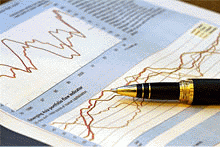
 By Roger J Kerr
By Roger J Kerr
'What goes up, must come down – the spinning wheel goes round and round'.
The 1969 song from Blood, Sweat and Tears rather aptly describes the state of the NZ dollar foreign exchange market and global financial/investment markets at this time.
The Kiwi dollar has risen and fallen 10 cents against the USD since April this year. The name of the group also describes the amount of work going on the save the world from a double-dip economic recession.
If the European leaders do not find some answers soon it will end in tears for the NZD, as a second global recession similar to 2008/2009 would risk the same thing happening to the New Zealand currency. Right now, the European leaders seem to be spinning their wheels round and round as they do not have a centralised fiscal control unit to deal with member Governments’ tax, spending and debt policies, as they have from the ECB to control inflation with monetary policy.
Indecision and delays from European leaders is adding to the volatility and turmoil in the markets.
The Kiwi dollar plunged through 0.8000 to lows of 0.7730 over this last week and has retreated from the highs of 0.8800 in early August as fast as it went up, to be 11 cents lower. The turn in direction and sentiment towards the NZ dollar is not surprising. As a 'growth/commodity' currency prone to heavy speculative buying and selling as global risk appetites switched from 'risk on' to 'risk off', the Kiwi was always going to be vulnerable to global growth being revised downwards and commodity prices falling in response.
The events of the last week have all added up to be very negative news for the Kiwi dollar and the markets have responded accordingly.
As always, it has been a combination of events that have been behind the sell-off. The same forces seem likely to force the Kiwi dollar over the short to medium term:-
- Fed Chief, Ben Bernanke disappointed some in the markets by not printing more USD’s in a QE3, thus causing heavy selling on Wall Street. The NZD/USD linkage to the Dow Jones Index sent the currency lower.
- RBNZ Governor, speaking in New York highlighted that the NZD was overvalued and any increase in our interest rates was some time off.
- The NZD and AUD were sold as commodity prices slid on the prospect of lower global growth as a result of the European sovereign debt crisis endangering business and investor confidence around the world.
- The EUR/USD exchange rate is rightfully lower at $1.3500 as risk with European economies and bank reaches crisis point. The lack of single leadership in Europe on fiscal matters is preventing solutions to their debt crisis.
- Manufacturing lead indices in China (PMI Index) decreased to below 50.0 last week - the weaker Chinese demand fuelling the sell-off in hard commodity markets.
- Weaker than expected GDP growth data in New Zealand for the June quarter at +0.1% highlighted the challenges our big export industries like forestry, fishing and mining are facing with falling demand, lower prices and a high currency.
The NZD/USD exchange rate can easily move a lot lower to the 0.7400 area in the short-term as the risk of a global double recession increases.
A Greek debt default is probably largely built-in to the exchange rate already and the Europeans are likely to ensure that it is a controlled default with contagion risks contained. A world-wide recession may be averted if the US Joint Political Committee, to report by 23 November, can come up with some sensible fiscal solutions that restore investor and business confidence in the US. The Obama administration also needs some innovative policies/rescue bailouts for the US residential real estate market to get the US economy moving again.
On the proviso these measures are effective, the double-dip recession should be avoided and the NZD/USD holds above 0.7000.
Looking further into 2012 and given the 'muddle/grind through' scenario in Europe and the US - that is, no recession - the Kiwi dollar could be on the rise again as the RBNZ return our interest rates to normal.
New Zealand may well be the only country increasing interest rates in mid-2012 and the risk to exporters would be that the NZD/USD rate is pushed back above 0.8000 again.
Those at risk to NZD/USD movements have been reminded that there are no experts in currency markets and FX rate forecasts should largely be ignored.
The local pundits who were forecasting the NZD/USD rate go to 0.9300 only a few weeks ago are now forecasting 0.7000!
Such wild changes are not that helpful to anyone. Pro-active hedging strategies/programmes under stable hedging policies by exporters and importers (using the available hedging instruments) will deliver near to expected results in this volatile and uncertain currency market environment.
No chart with that title exists.
--------------------
* Roger J Kerr runs Asia Pacific Risk Management. He specialises in fixed interest securities and is a commentator on economics and markets. More commentary and useful information on fixed interest investing can be found at rogeradvice.com

We welcome your comments below. If you are not already registered, please register to comment
Remember we welcome robust, respectful and insightful debate. We don't welcome abusive or defamatory comments and will de-register those repeatedly making such comments. Our current comment policy is here.